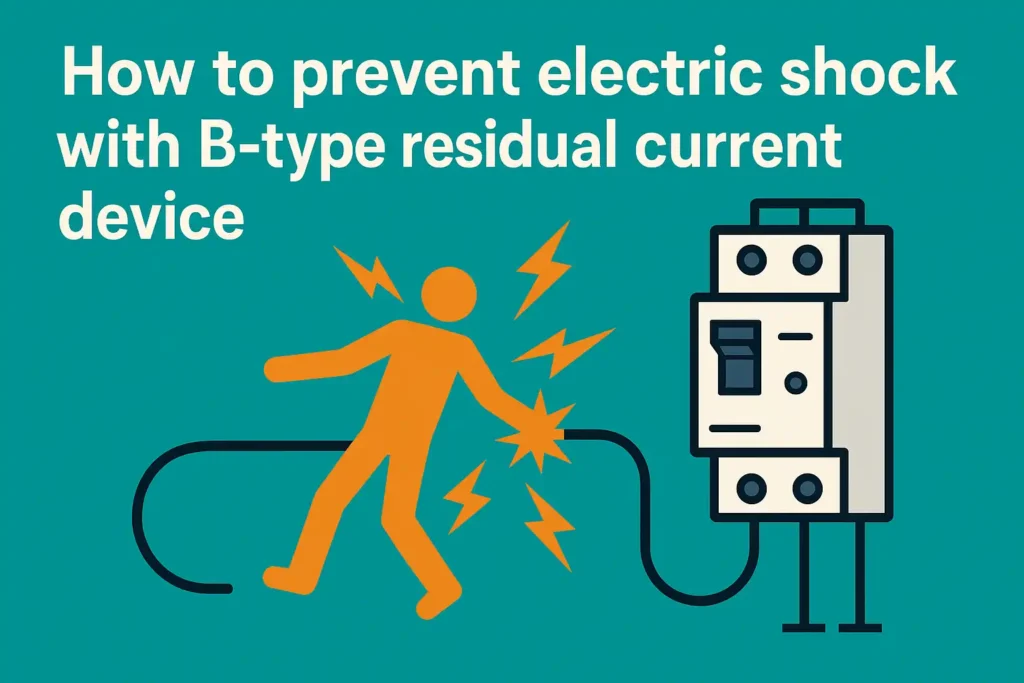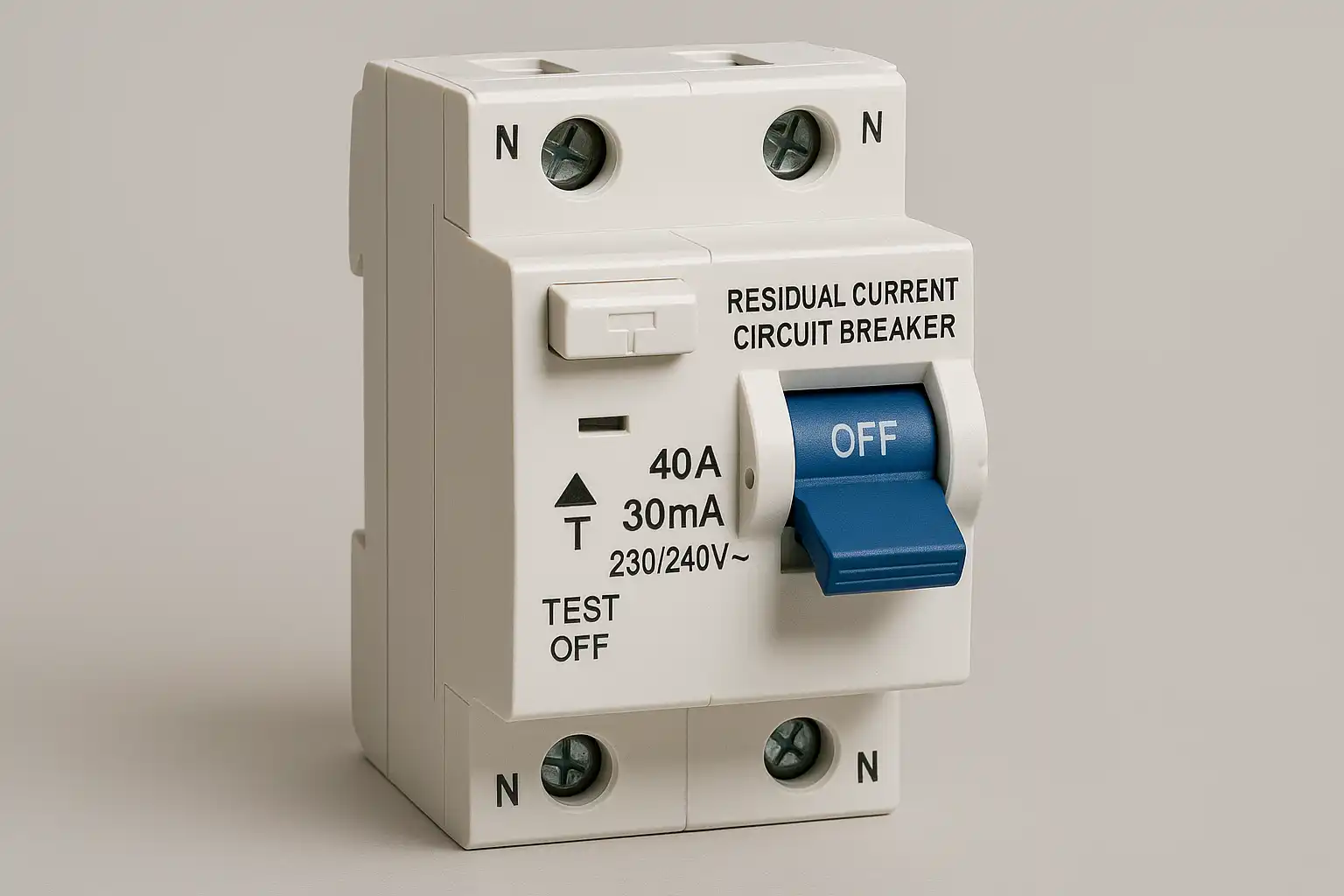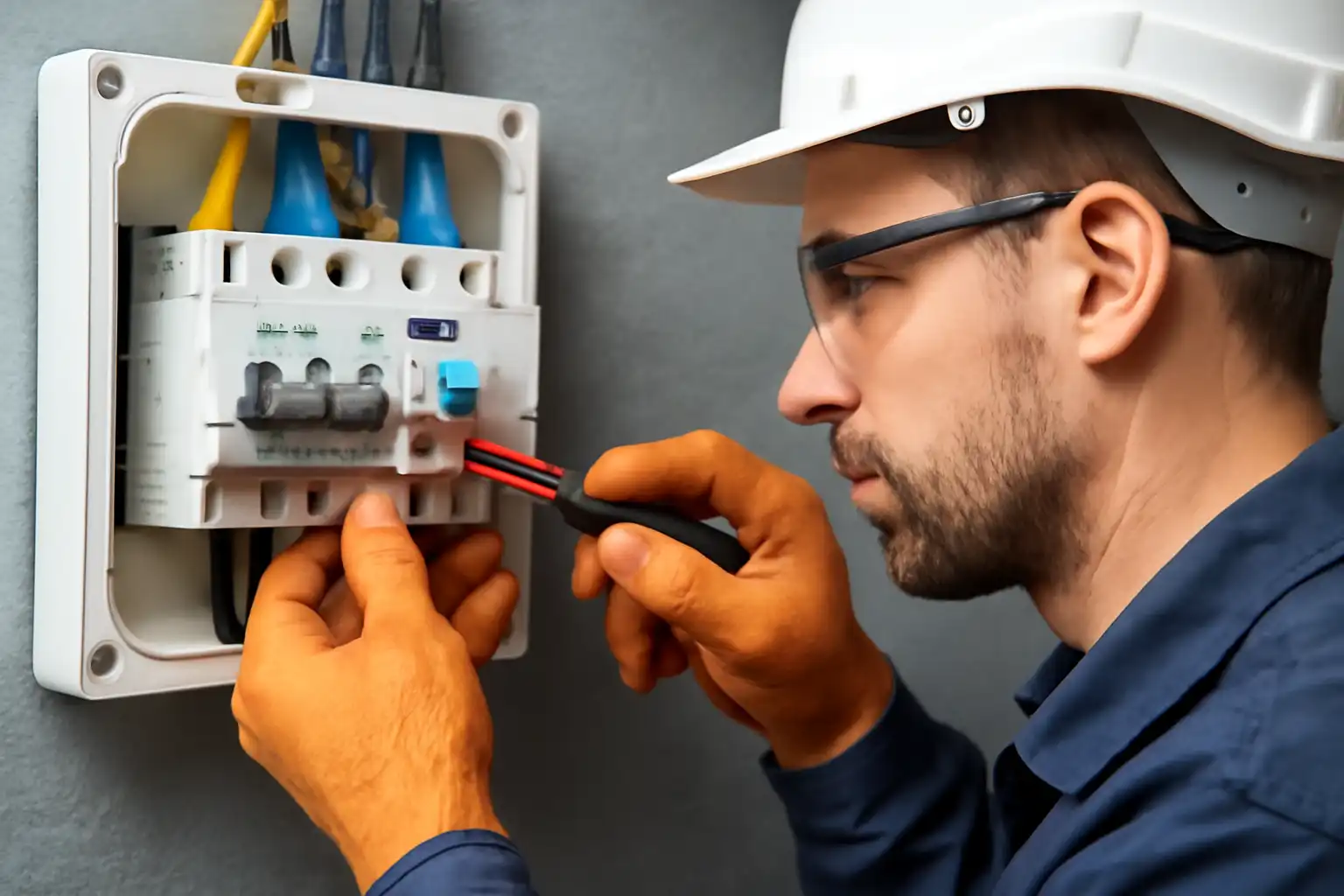Electric shocks happen when electricity flows the wrong way. A B-type residual current device stops these dangers. It finds both alternating and direct currents that leak out. If leakage happens, it quickly cuts off the power. This fast action keeps you safe and protects your devices. Using this device makes your home and workplace safer.
Key Takeaways
- A B-type device finds AC and DC leaks to stop shocks.
- Check the device every month and test it every three months.
- Place the device near the main board. Follow the maker’s wiring steps.
- Use this device in risky spots like kitchens or workshops for safety.
- If it trips often, look for broken appliances or bad wiring. Get help if problems stay.
How B-Type Residual Current Devices Work
Key Components
A B-type residual current device has key parts for safety. These include a sensor, a relay, and a circuit breaker. The sensor finds leaking currents, both AC and DC. The relay reads this data and signals the circuit breaker. These parts work together to stop power during a fault.
- Sensor: It detects unusual currents, like high-frequency AC or pure DC. This helps it manage complex systems, like solar panels.
- Relay: The relay gets signals from the sensor and acts fast. It triggers the circuit breaker to lower shock risks.
- Circuit Breaker: This part cuts off power to stop harm or damage.
Tip: Check these parts often to keep them working well. Broken parts can make the device less effective.
Fault Current Detection
Finding fault currents is the main job of this device. It spots leaks that could cause shocks or fires. Unlike other devices, it detects both AC and DC currents. This makes it perfect for modern systems like electric cars or solar setups.
- Performance Tests: These tests check if the device handles tough conditions. For example, they test high DC time constants to ensure reliability.
- Type Tests: These tests confirm the device meets safety standards. A certificate proves its quality and safety.
By catching faults early, the device stops accidents and protects your system.
Power Disconnection Mechanism
The power disconnection system acts fast during a fault. The sensor finds leaks, and the relay tells the circuit breaker to cut power. This happens in milliseconds to reduce danger.
| Aspect | Description |
|---|---|
| Coordination | Devices follow IEC 60364-4 earthing rules. |
| Disconnection | RCDs disconnect automatically in TT systems with set sensitivity. |
| Tripping Times | Circuits under 32 A have specific tripping limits. |
| Fault Conditions | A second earth fault in IT systems activates protection devices. |
| Selectivity | Main breakers stop unnecessary system-wide shutdowns. |
This system is vital for renewable energy or heavy machines. It keeps things safe without shutting down everything.
Benefits of Using a B-Type Residual Current Device
Comprehensive Protection Against Electric Shocks
A B-type residual current device gives strong protection from shocks. It finds leaking currents from both AC and DC sources. This feature ensures no harmful current goes unnoticed.
This device keeps your home or workplace safe. It quickly cuts power when it detects a problem. This reduces the chance of injury or damage. Unlike older devices, it handles advanced electrical systems easily.
Tip: Use this device in places with high electrical risks. Kitchens, bathrooms, and workshops are good examples. It adds safety where it’s needed most.
Suitability for Modern Electrical Systems
Modern systems often use advanced tools like solar panels or EV chargers. These systems create DC currents that older devices can’t detect. A B-type residual current device solves this issue by spotting both AC and DC leaks.
This device works well with renewable energy setups or high-tech machines. It keeps your system safe without lowering its performance.
- Applications:
- Charging stations for electric vehicles
- Solar panel systems
- Industrial machines with speed controls
Its flexibility makes it a key part of modern systems.
Enhanced Safety in Renewable Energy Applications
Renewable energy systems, like solar panels, produce DC currents. These systems need special protection to avoid shocks or damage. A B-type residual current device is built for these needs.
This device keeps renewable energy setups safe. It finds DC leaks that might otherwise be missed. This protects both people and equipment.
| Feature | Benefit |
|---|---|
| DC Current Detection | Stops unnoticed leaks in renewable energy systems. |
| Fast Response Time | Cuts power quickly to lower risks. |
| Compatibility | Works well with solar panels, turbines, and hybrid setups. |
Note: Check your B-type residual current device often. This helps it work well in renewable energy systems.
Installation and Maintenance of B-Type Residual Current Devices
Proper Installation Steps
Setting up a B-type residual current device needs careful work. First, find spots in your system where leaks might happen. These are often circuits for solar panels, EV chargers, or machines.
Follow these steps to install it right:
- Inspect the Electrical System: Make sure the device fits your system. Check if it handles both AC and DC leaks.
- Position the Device: Place it near the main board for better safety.
- Connect the Wiring: Attach wires as per the maker’s instructions. Tighten all connections to avoid problems.
- Test the Device: Run tests to see if it detects leaks and cuts power.
Tip: Use tools suggested by the maker to avoid damage during setup.
Safety Measures During Installation
Safety is key when setting up a B-type residual current device. Follow rules to stay safe and ensure it works well.
| Key Findings | Description |
|---|---|
| Necessity of B-type RCDs | Needed for systems with DC parts, like solar panels. |
| Limitations of A-type RCDs | A-type devices may miss high DC currents, causing risks. |
| Testing Results | B-type RCDs work well where other types fail. |
- B-type devices are best for solar systems, though not required.
- Other RCDs, except B+ type, may not handle solar current types.
Note: Wear insulated gloves and check circuits are off before starting.
Maintenance Best Practices
Taking care of your B-type residual current device keeps it working well. Regular checks and fixes stop problems and make it last longer.
Here’s how to maintain it:
- Inspect Monthly: Look for damage or loose wires. Replace bad parts quickly.
- Test Quarterly: Press the test button to check if it works. Make sure it cuts power during test faults.
- Clean Annually: Dust it off to stop overheating or lower performance.
Tip: Keep a record of checks and fixes. This helps spot repeated issues and plan replacements.
Troubleshooting Problems with B-Type Residual Current Devices
Fixing Frequent Tripping
Frequent tripping can interrupt power and be annoying. This happens when the device detects too much leakage current. Common causes include overloaded circuits, bad appliances, or wrong wiring. Start by checking your electrical system for issues. Look for broken wires or faulty devices causing leaks. Fix or replace any damaged parts right away.
If the issue continues, the device’s sensitivity might be too high. Adjust the sensitivity to better fit your system’s needs. Always follow the maker’s instructions when changing settings.
Tip: Use a multimeter to find leakage currents. It helps locate the problem fast.
Solving Failure to Trip
Failure to trip is dangerous and reduces safety. This can happen if DC fault currents saturate the device’s magnetic core. Saturation stops the device from spotting faults. Machines like solar inverters or speed drives often create these DC currents. Using the wrong device type can also cause this issue.
To fix it, make sure you have the right device for your system. A B-type residual current device handles both AC and DC leaks. If it still doesn’t trip, press the test button to check it. Replace the device if it doesn’t respond to keep things safe.
Note: Regular testing and care help avoid device failures.
Knowing When to Call an Expert
Some problems need a professional to solve. If you can’t find the cause of tripping or failure, call an electrician. Experts have tools and skills to fix tough issues. They can also check if your device meets safety rules and is installed properly.
Reminder: Don’t try repairs if you’re unsure about electricity. Stay safe by getting expert help.
A B-type residual current device helps stop electric shocks. It finds both AC and DC leaks to improve safety. This makes it great for solar panels and advanced systems. Install it correctly and check it often to keep it working. Fix problems quickly to protect your system from harm. Using this device keeps people and equipment safe in modern setups.
FAQ
What is the difference between a B-type and an A-type residual current device?
A B-type device finds both AC and DC leaks. An A-type device only detects AC leaks. B-type devices are better for modern setups like solar panels or EV chargers.
Tip: Pick a B-type device for systems with DC parts. It gives full protection.
Can you install a B-type residual current device yourself?
You can install it if you know about electricity. But hiring a licensed electrician is safer. Wrong installation can make the device less effective.
Reminder: Always turn off power before doing electrical work.
How often should you test a B-type residual current device?
Test it every three months using the test button. This checks if it works and trips properly. Regular tests keep it safe and prevent failures.
Are B-type residual current devices suitable for all electrical systems?
They work best in systems with DC parts, like solar panels or EV chargers. For simple AC systems, an A-type device might be enough.
Note: Check your system’s needs before picking a device.
What should you do if your B-type device trips frequently?
Frequent tripping means there’s a problem in your system. Look for broken wires or bad appliances. If it keeps happening, call an expert to adjust sensitivity or fix hidden issues.
Tip: Use a multimeter to find leaks fast.
The following information may be of interest to you
KRC3 B-type residual current circuit breaker
Customizable Type A, AC, and Type B RCCB
Top 8 Residual Current Circuit Breaker Brands for Home Safety





